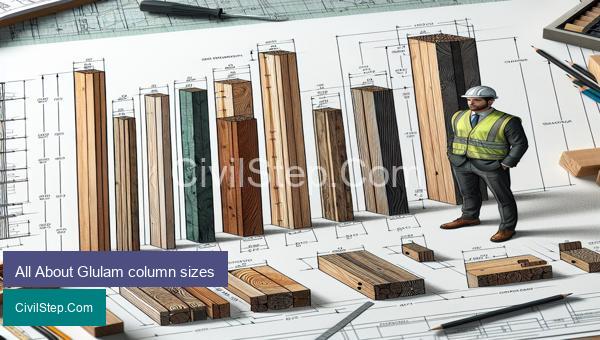
Glued laminated timber, commonly referred to as glulam, is a popular building material used in the construction of columns, beams, and other structural elements. Its versatility, strength, and aesthetic appeal makes it a preferred choice for architects and builders. However, when it comes to glulam columns, there is often confusion regarding the sizes and dimensions available. In this article, we will explore all that you need to know about glulam column sizes, dispelling any doubts and providing you with a clear understanding of this essential building element. So, whether you are a homeowner planning a renovation or a professional in the construction industry, read on to discover the intricacies of glulam column sizes.
Glulam column sizes

Glulam, short for glued laminated timber, is a popular type of structural element used in construction. It is created by bonding together multiple layers of timber with a strong adhesive, resulting in a strong and durable material. Glulam columns, in particular, are commonly used in building designs due to their versatility and aesthetic appeal.
One important aspect to consider when using Glulam columns is the appropriate size for the specific application. The size of a Glulam column is determined by several factors, including the load it will be supporting, the height of the column, and the type of wood used. The most commonly used standards for Glulam column sizing are the American Institute of Timber Construction (AITC) standard and the Timber Construction Manual published by the American Wood Council (AWC).
The AITC standard provides a method for calculating the allowable compressive stress for various column lengths and sizes. It also takes into account the type of wood used, with different species having different allowable stresses. For example, Eastern Hemlock has an allowable stress of 950 psi, while Western Cedar has an allowable stress of 1300 psi.
The Timber Construction Manual by AWC provides a similar method for calculating the allowable compressive stress but also takes into consideration the buckling of the column. Buckling occurs when a column is subjected to a compressive load, causing the column to bend and potentially fail. To prevent this, the manual provides a formula for calculating the critical buckling load and using this to determine the appropriate column size.
Apart from the structural considerations, the aesthetics of a Glulam column should also be taken into account when determining the size. The size of the column affects the spacing between columns and the overall appearance of the structure. Typically, larger and more elongated columns are used for taller structures, while smaller and more proportionate columns are used for shorter and wider structures.
In conclusion, Glulam column sizes are determined by a combination of factors such as load, height, wood species, and aesthetic requirements. It is essential to follow the standards set by reputable organizations such as AITC and AWC to ensure the safety and structural integrity of the columns. Consulting a structural engineer is recommended to determine the appropriate Glulam column size for a specific project.
Conclusion
In conclusion, understanding the various sizes available for glulam columns is crucial for any construction project. By considering factors such as loading requirements, span lengths, and building codes, the appropriate column size can be determined to ensure structural integrity and overall success of the project. Additionally, advancements in technology like computer-aided design and simulation have made it easier to accurately determine the required column size. It is important to consult with experts and adhere to industry standards when selecting glulam column sizes to ensure a safe and successful construction project. With its many advantages, including sustainability, versatility, and strength, it’s no wonder glulam has become a popular choice for structural columns in modern construction. By understanding the various sizes and their applications, builders and
